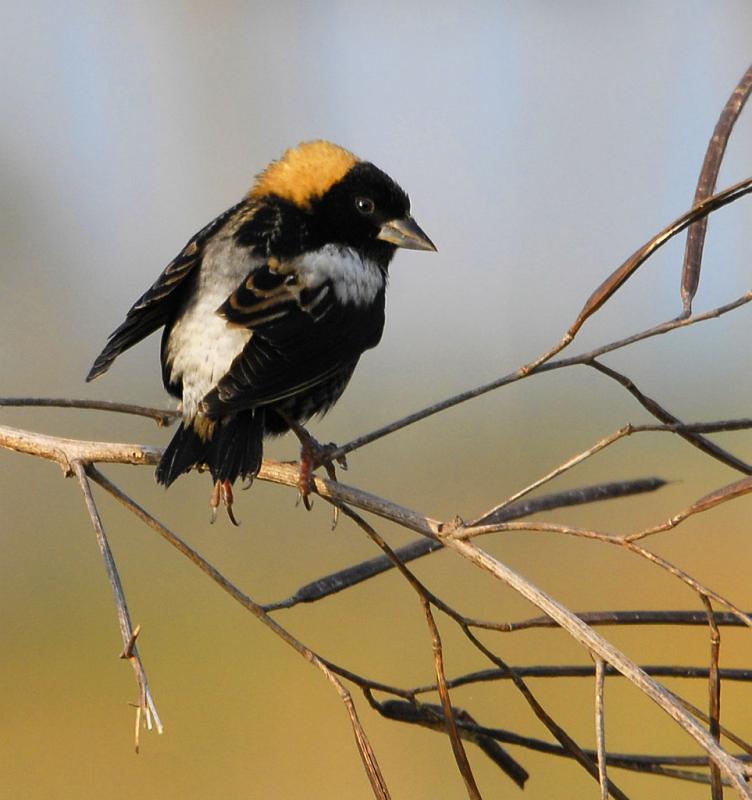Guide to Boreal Birds
Overview
A polygamous bird, the male Bobolink courts with the basic blackbird stance: head down, neck feathers ruffled, tail fanned, and wings arched downward, displaying his prominent white shoulder patches. Originally the Bobolink was probably confined to the central grasslands, but with the settling of the Northeast it quickly spread into New England. Now, with farms abandoned and the land returning to forest, the species is declining. Each fall, migrant Bobolinks gather in large numbers in southern rice fields, where their habit of eating grain has earned them the name "Ricebird."
Description
6-8" (15-20 cm). Breeding male largely black, with white rump and back, dull yellow nape. Female and winter male rich buff-yellow, streaked on back and crown. Short, finch-like bill. Female Red-winged Blackbird is darker, less buffy, and has longer bill.
Voice
Flight song is a series of joyous, bubbling, tumbling, gurgling phrases with each note on a different pitch. Call a soft pink, often heard on migration.
Nesting
4-7 gray eggs, spotted with red-brown and purple, in a poorly made but well-concealed cup of grass, stems, and rootlets, placed on the ground in a field.
Habitat
Prairies and meadows; marshes during migration.
Range/Migration
The Bobolink migration is one of the most spectacular for any land bird; an individual from the northern portion of the breeding range can fly a 20,000-mile round-trip each year between the Canadian prairie and the grasslands of Argentina. Bobolinks leave their wintering grounds in mid-March and begin appearing along the U.S. Gulf coast in early April. In the past, rice farmers along the Louisiana coast killed them by the truckload in an attempt to protect their crops from arriving flocks. Bobolinks are no longer hunted in this country, but they are considered a serious pest in their winter habitat, and the entire North American population is at risk should an efficient control method ever be developed in South America.
Breeds from British Columbia, Manitoba, and Newfoundland south to northern California, Colorado, and Pennsylvania. Winters in southern South America.



